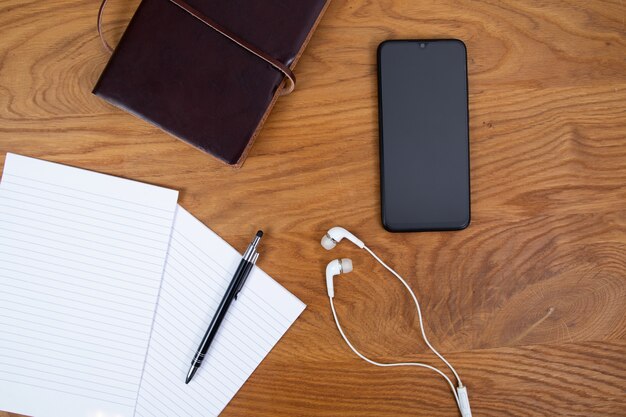Enhancing Your Hearing Experience: Using Your iPhone's Microphone with Hearing Aids
Imagine a world where your iPhone becomes an extension of your hearing aids, improving sound clarity and enhancing communication capabilities. For many users, this is not just a dream but a reality. The integration of technology into hearing devices has opened new doors to quality auditory experiences. This guide explores how to effectively use your iPhone's microphone to optimize your hearing aid performance, offering you better sound quality and a more seamless life experience.
📱 Why Use Your iPhone's Microphone with Hearing Aids?
With the proliferation of smartphones, accessibility features have increasingly taken center stage. Integrating your iPhone's microphone with your hearing aid offers several benefits, primarily because it leverages the iPhone’s advanced processing capabilities to streamline sound directly to the hearing aid.
Enhanced Sound Clarity: iPhones are equipped with sophisticated microphones designed to capture sound with precision. When used in conjunction with hearing aids, they can reduce ambient noise and enhance the clarity of voices.
Environment-Adaptive Listening: One of the standout features of newer iPhone models is their ability to adapt to different environments, making it easier to focus on specific sounds or voices in noisy settings.
User-Friendly Controls: The iPhone interface offers intuitive controls that make it easier to adjust volume, sound profiles, and more, providing a customizable hearing experience.
🔍 A Quick Guide to Connecting iPhone Microphone to Hearing Aids
Transitioning to a high-tech hearing experience starts with connecting your devices. Here’s how you can effortlessly integrate your iPhone's microphone with your hearing aids.
Getting Started
Before you begin, ensure your iPhone and hearing aids are compatible. Most modern hearing aids support Bluetooth connectivity, which is crucial for pairing with an iPhone. Check the following:
- Your iPhone is running the latest iOS version.
- Your hearing aids are Bluetooth-enabled.
Step-by-Step Connection Process
Step 1: Turn on Bluetooth
Begin by ensuring your iPhone’s Bluetooth is turned on:
- Go to Settings on your iPhone.
- Tap Bluetooth and switch it on.
Step 2: Pair Your Hearing Aids
Next, you will need to pair your hearing aids with your iPhone:
- Navigate to Settings.
- Tap Accessibility, then Hearing Devices.
- Ensure your hearing aids are in pairing mode. Refer to the manual if unsure how to activate this.
- Your hearing aids should appear under Devices as “Not Connected.” Tap on them to pair.
Step 3: Use Live Listen
Apple’s Live Listen feature turns your iPhone into a remote microphone. Here’s how to set it up:
- Make sure your hearing aids are connected.
- Open Control Center (swipe down from the upper-right corner of the screen).
- Tap on the Hearing icon.
- Select Live Listen.
✅ Tips for Optimizing Sound Quality
Using the iPhone’s microphone with hearing aids isn't just about connection; it’s about optimizing your experience.
- Positioning: Properly position your iPhone’s microphone towards the sound source for best results.
- Ambient Noise Management: Use noise-filtering features and apps to further reduce background noise, improving clarity.
- Regular Updates: Ensure your iPhone runs the latest updates for enhanced performance and security.
💡 Related Features and Tips
The iPhone offers other features that can enhance your auditory experience with hearing aids.
Noise App
The Noise app is an invaluable tool for monitoring the sound levels around you. Loud environments can be harmful, especially if you're using hearing aids. This app notifies you when noise levels become unsafe, allowing you to make real-time adjustments.
Headphone Accommodations
Through Headphone Accommodations, users can tailor the audio experience by adjusting sound frequencies. Although primarily for Apple headphones, these settings can also align well with hearing aid outputs.
Custom Audio Setup
You can customize the audio for your particular hearing needs by adjusting audio balance, setting specific sound frequencies, and using preset profiles suitable for various situations like phone calls or media consumption.
🎯 Key Takeaways
- Compatibility First: Ensure your devices are compatible, primarily your iPhone OS is updated, and hearing aids are Bluetooth-ready.
- Simple Steps for Connection: Activation of Bluetooth, pairing your devices using the 'Hearing Devices' menu, and utilizing Live Listen are crucial steps.
- Feature-Rich: Explore iOS features like Noise App and Headphone Accommodations for enhanced personalization.
- Optimal Utilization: Regularly update your device and apps to leverage improved capabilities and security.
🎯 Quick Summary
🔹 Ensure compatibility between devices
🔹 Pair easily through iPhone's settings
🔹 Activate Live Listen for enhanced sound clarity
🔹 Use supporting features such as the Noise app and headphone accommodations
🔹 Regularly update your devices for improved performance
By utilizing your iPhone’s microphone in conjunction with your hearing aids, you can vastly improve your auditory environment. Embrace the technology at your fingertips to tailor your hearing experience, making sure it's as personalized and clear as possible. With the right configuration, your iPhone becomes more than just a smartphone, evolving into a powerful tool for everyday hearing enhancement.

Related Topics
- a Plus Hearing Aid Centers
- a Real Pain Showtimes Near Centerville
- Are Airpods Bad For Your Ears
- Are Apple Second Generation Airpods Hearing Aids
- Are Audien Hearing Aids Just Amplifiers
- Are Costco Hearing Aids As Good As Others
- Are Costco Hearing Aids Good
- Are Hearing Aid Domes Interchangeable
- Are Hearing Aid Subscriptions Worth It
- Are Hearing Aid Tax Deductible